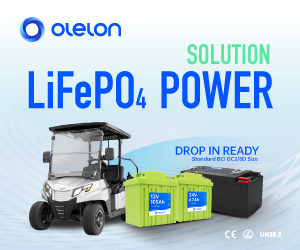Battery manufacturers have improved deep cycle battery performance through the use of additives but not all of them result in the same benefit to customers. At the core of all deep cycle flooded lead-acid (FLA) battery technology is a basic design that has undergone continuous improvement over more than 100 years. Lead battery chemistry is one of the most dependable and cost-effective technologies over any other type of battery used in a variety of global industries. While these batteries have historically been the most widely used and the most recycled, a variety of additives and technologies have been introduced over the last few years to improve their efficiency to an even greater extent.
Grid Alloys
Historically, the primary failure mode of deep cycle lead-acid batteries has been positive grid corrosion. The grid alloys used to manufacture deep cycle flooded lead-acid battery plates typically consist of lead with additions of antimony to harden the soft lead, and to improve the deep cycle characteristics of the battery. Additional metals are often added to the lead-antimony alloys to improve strength and electrical conductivity. Another additive that is used to improve lead-antimony alloys is selenium. Selenium acts as a grain refiner in lead-antimony alloys to provide a fine-grain alloy. This fine grain alloy provides additional strength and corrosion resistance over conventional lead-antimony alloys. The effect of these grid alloy improvements is that positive grid corrosion is no longer the primary failure mode and the cycle life of FLA deep cycle batteries has been significantly increased.
Active Materials
The starting materials for deep cycle FLA positive active materials are made from a mixture of lead oxide, sulfuric acid, and various additives to improve the performance and life of the positive electrodes in a finished battery. Historically, positive electrodes have been processed using a procedure called hydroset designed to ‘grow’ tetrabasic lead sulfate (TTBLS) crystals in the plates to provide the strength to resist the constant expansion and contraction of the active materials during cycling. This crystal growing process has limitations in its ability to control the range of sizes of the TTBLS crystals. Through the use of crystal seeding additives, the range of crystal sizes can be controlled to the most desirable sizes. These uniformly controlled crystal sizes in the TTBLS structure result in increased initial capacity, faster cycle-up to rated capacity, higher peak capacity, and improved charging using the wide range of charger technologies used in various applications.
Concurrent with the improvements in deep cycle FLA positive active materials, improvements in the performance of deep cycle FLA negative active materials is needed. Carbon additives have been used in the negative active materials of lead-acid batteries for many years. These additives have been used in lead-acid battery expanders to prevent the natural tendency of the negative active material to shrink or coalesce during cycling. Negative active material shrinkage can reduce the capacity and life of deep cycle FLA batteries. Recent improvements in these carbon materials have opened up new opportunities to improve a number of performance limitations of lead-acid batteries. New structured carbon materials such as graphites, graphenes, and nanocarbons have been used to control sulfation and improve chargeability in partial state of charge (PSOC) applications such as renewable energy.
Although the basic structure of a FLA battery hasn’t changed for more than 100-years, manufacturers and the battery industry are constantly searching for ways to further improve efficiency and maintain their cost effectiveness for use in a variety of applications, including golf car and other electric vehicles. Additives are one of the ways FLA batteries are becoming more efficient and new technologies to further improve them are on the horizon.

























